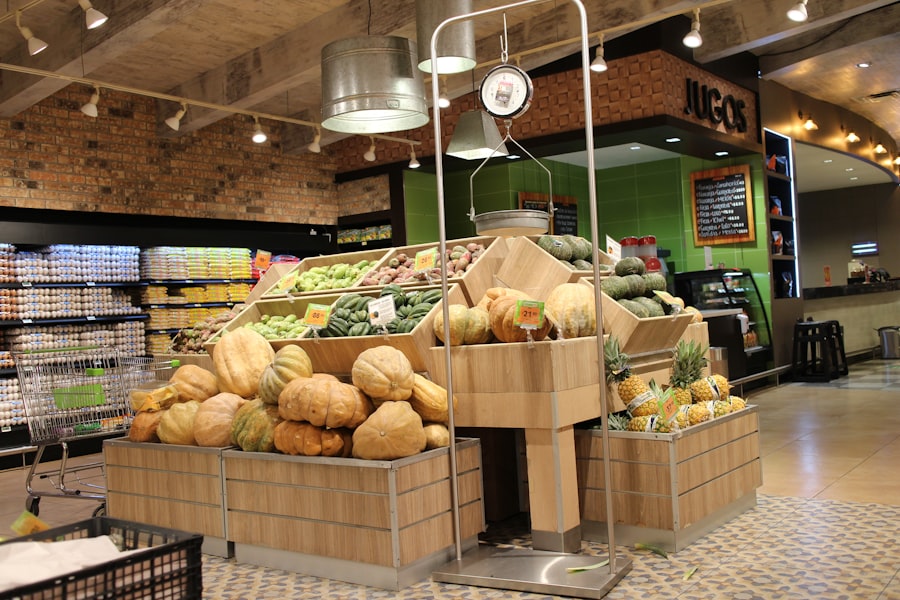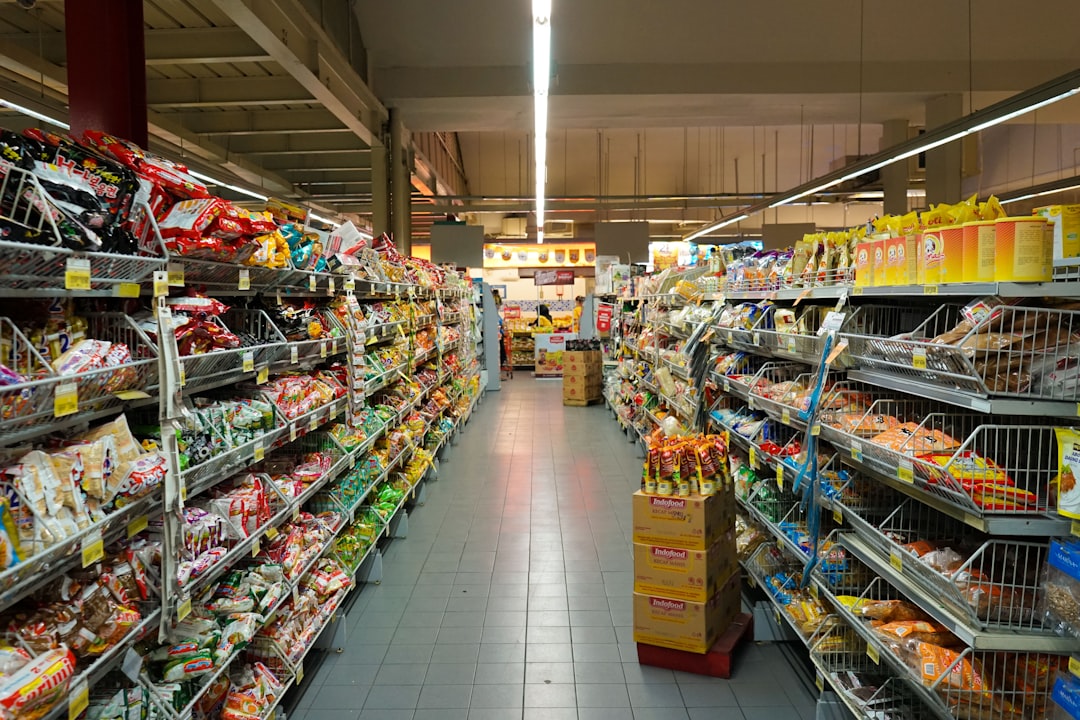When you step into a grocery store, you may not realize the intricate web of pricing strategies that dictate what you pay for your favorite items. Grocery store markups are essentially the difference between the cost of acquiring a product and the price at which it is sold to you, the consumer. This markup is crucial for the store’s profitability, covering operational costs such as rent, utilities, employee wages, and other overhead expenses.
Understanding this concept can help you make more informed decisions about your purchases and budget. Markups can vary significantly from one product to another, influenced by factors such as demand, competition, and even the store’s location. For instance, fresh produce may have a lower markup compared to processed foods, which often have higher profit margins.
As you navigate the aisles, it’s essential to recognize that not all items are priced equally; some may be marked up significantly more than others. By grasping the basics of grocery store markups, you can better appreciate the pricing structure and potentially identify opportunities to save money.
Key Takeaways
- Understanding Grocery Store Markups:
- Grocery store markups are the difference between the cost of the product to the store and the price at which it is sold to the consumer.
- The Cost of Convenience: How Markups Impact Prices:
- Convenience items often have higher markups due to the added value of saving time and effort for the consumer.
- Uncovering the Truth: How Markups are Calculated:
- Markups are calculated by dividing the difference between the selling price and the cost by the cost, then multiplying by 100 to get the percentage markup.
- The Role of Branding in Grocery Store Markups:
- Branding can significantly impact markups, with well-known brands often commanding higher prices and markups compared to generic or private label products.
- The Impact of Seasonality on Grocery Store Markups:
- Seasonal products may have higher markups due to increased demand and limited availability during certain times of the year.
The Cost of Convenience: How Markups Impact Prices
Convenience is a double-edged sword in the grocery shopping experience. While it allows you to save time and effort, it often comes at a premium price. Many grocery stores offer pre-packaged meals, ready-to-eat options, and other convenience items that are marked up significantly compared to their raw ingredients.
When you opt for these convenient choices, you may find yourself paying substantially more for the same food that you could prepare yourself with a little time and effort.
As you consider your grocery list, think about how much you’re willing to pay for convenience versus preparing meals from scratch.
By weighing the cost of convenience against your budget and time constraints, you can make smarter choices that align with your financial goals while still enjoying the benefits of quick meal options when necessary.
Uncovering the Truth: How Markups are Calculated

The calculation of grocery store markups is not as straightforward as it may seem. Retailers typically start with the wholesale price—the amount they pay to suppliers for products—and then add a markup percentage to determine the retail price. This percentage can vary widely based on several factors, including the type of product, market conditions, and competitive pricing strategies.
For example, a store might apply a higher markup on specialty items or organic products due to their perceived value and lower competition. Additionally, grocery stores often employ psychological pricing strategies to influence consumer behavior. You might notice that many items are priced just below a round number—like $4.99 instead of $5.00—making them appear more attractive to shoppers.
Understanding how these markups are calculated can empower you to make more informed purchasing decisions and help you identify when a product is genuinely worth its price tag or when it’s simply a result of clever marketing tactics.
The Role of Branding in Grocery Store Markups
| Branding Element | Impact on Markups |
|---|---|
| Brand Recognition | Higher markups for well-known brands |
| Brand Loyalty | Allows for higher markups due to customer preference |
| Brand Reputation | Positive reputation can justify higher markups |
| Private Label | Lower markups for store-owned brands |
Branding plays a significant role in grocery store markups, as it can create perceived value that allows retailers to charge more for certain products. Well-known brands often command higher prices due to their established reputation and consumer loyalty. When you reach for a familiar brand on the shelf, you’re not just paying for the product itself; you’re also paying for the marketing, research, and development that went into creating that brand image.
Conversely, generic or store-brand products typically have lower markups because they lack the extensive marketing budgets of their branded counterparts. These private label products can offer similar quality at a fraction of the price, making them an attractive option for budget-conscious shoppers like yourself. By being aware of how branding influences pricing, you can make more strategic choices about which products to buy based on both quality and cost.
The Impact of Seasonality on Grocery Store Markups
Seasonality is another critical factor that affects grocery store markups. Certain products are more abundant during specific times of the year, leading to fluctuations in supply and demand that directly impact pricing. For example, fresh fruits and vegetables are often cheaper during their peak harvest seasons but can see significant markups during off-seasons when they must be imported or stored for longer periods.
As you plan your grocery shopping around seasonal availability, consider how this can affect your budget. Purchasing seasonal produce not only supports local farmers but also allows you to take advantage of lower prices. Additionally, being mindful of seasonal trends can help you avoid paying inflated prices for out-of-season items that may not be as fresh or flavorful.
Hidden Markups: The Truth About Private Label Products

While private label products are often marketed as budget-friendly alternatives to name-brand items, they can still carry hidden markups that may surprise you. Although these products typically have lower retail prices, some stores may still apply significant markups based on their own pricing strategies or perceived value. This means that while you might think you’re saving money by choosing a store brand, you could still be paying more than necessary.
To navigate this landscape effectively, it’s essential to compare prices between private label products and their branded counterparts. Sometimes, name-brand items go on sale or have promotions that make them more affordable than their generic versions. By being vigilant and doing a little research before making your purchases, you can uncover potential savings and ensure you’re getting the best deal possible.
How Competition Affects Grocery Store Markups
Competition among grocery stores plays a pivotal role in determining markups and pricing strategies. In areas with multiple grocery retailers vying for your business, prices tend to be more competitive, leading to lower markups across various products. Conversely, in regions where one store dominates the market, you may find higher prices due to a lack of competition.
As a savvy shopper, it’s beneficial to familiarize yourself with the grocery landscape in your area. Take note of which stores offer competitive pricing on specific items and consider shopping around to take advantage of sales or promotions. By understanding how competition influences grocery store markups, you can make informed decisions that help stretch your budget further.
The Influence of Supply and Demand on Grocery Store Markups
The principles of supply and demand are fundamental in shaping grocery store markups. When demand for a particular product surges—whether due to seasonal trends or sudden popularity—retailers may increase prices to capitalize on this heightened interest. Conversely, if supply exceeds demand, prices may drop as stores seek to clear inventory.
As you shop, keep an eye on trends that could affect supply and demand dynamics. For instance, if a new health trend emerges that promotes a specific superfood, you might see prices rise as demand increases. Conversely, if a product is nearing its expiration date or if there’s an oversupply due to seasonal harvests, prices may drop significantly.
By staying informed about these fluctuations, you can make strategic purchasing decisions that align with market trends.
The Truth About Promotions and Discounts in Grocery Stores
Promotions and discounts are often used by grocery stores as marketing tools to attract customers and boost sales. However, it’s essential to approach these offers with a discerning eye. While discounts can provide genuine savings on certain items, they can also be misleading if not carefully evaluated.
Sometimes, stores will raise prices before offering a discount to create an illusion of savings. As you navigate promotional offers in your local grocery store, take the time to compare prices before and after discounts are applied. This will help you determine whether you’re truly getting a good deal or simply falling victim to clever marketing tactics.
Additionally, consider whether purchasing items on sale aligns with your needs; buying something just because it’s discounted can lead to waste if it doesn’t fit into your meal planning.
How Consumer Behavior Drives Grocery Store Markups
Consumer behavior significantly influences grocery store markups and pricing strategies. Retailers invest considerable resources into understanding what drives your purchasing decisions—whether it’s brand loyalty, convenience, or impulse buying—and adjust their pricing accordingly. For instance, if they notice that shoppers are willing to pay more for organic products or specialty items, they may increase markups on those goods.
Being aware of how your own shopping habits impact pricing can empower you as a consumer. Reflect on what drives your purchasing decisions: Are you swayed by attractive packaging? Do promotions catch your eye?
By understanding your own behavior and motivations as a shopper, you can make more conscious choices that align with your budget while avoiding unnecessary markups.
Tips for Saving Money at the Grocery Store: Understanding Markups
To maximize your savings at the grocery store while navigating the complexities of markups, consider implementing several strategies into your shopping routine. First and foremost, familiarize yourself with unit pricing—this allows you to compare prices across different sizes and brands effectively.
Additionally, create a shopping list based on seasonal produce and sales flyers from local stores to ensure you’re purchasing items at their lowest prices. Don’t hesitate to explore generic brands; they often provide similar quality at reduced prices compared to name brands. Lastly, consider using loyalty programs or digital coupons offered by stores; these can provide additional savings that help offset markups on everyday items.
By understanding grocery store markups and employing these strategies in your shopping habits, you’ll be better equipped to navigate the aisles with confidence while keeping your budget intact.
In exploring the truth about grocery store markups, it’s essential to consider the broader context of consumer spending and financial growth. An insightful article on this topic can be found on How Wealth Grows, which delves into various aspects of personal finance and consumer behavior. This article provides a comprehensive understanding of how markups affect your grocery bill and offers strategies to mitigate these costs. For more detailed insights, you can read the related article on their website by following this link.
WATCH NOW! How Algorithms Quietly Bloat Your Grocery Bill; Here’s How to Fight Back
FAQs
What are grocery store markups?
Grocery store markups refer to the difference between the cost of a product to the store and the price at which it is sold to the consumer. This markup is how grocery stores make a profit on the products they sell.
How much do grocery stores typically markup their products?
The markup on grocery store products can vary widely depending on the type of product and the store itself. On average, grocery stores markup their products by around 25-50%.
What factors contribute to grocery store markups?
Several factors contribute to grocery store markups, including the cost of the product to the store, operating expenses, overhead costs, and desired profit margins.
Are there certain products that have higher markups in grocery stores?
Yes, certain products, such as organic and specialty items, tend to have higher markups in grocery stores due to their higher production costs and consumer demand.
How can consumers save money on groceries despite markups?
Consumers can save money on groceries by shopping sales and promotions, using coupons, buying store brands, and comparing prices between different stores. Additionally, buying in bulk and avoiding impulse purchases can help reduce grocery expenses.
